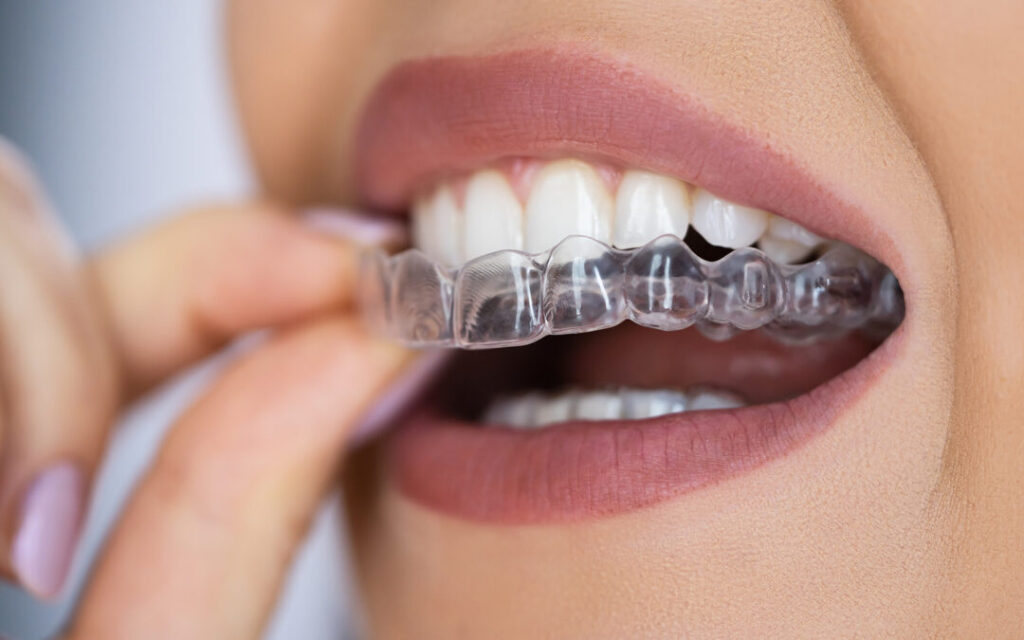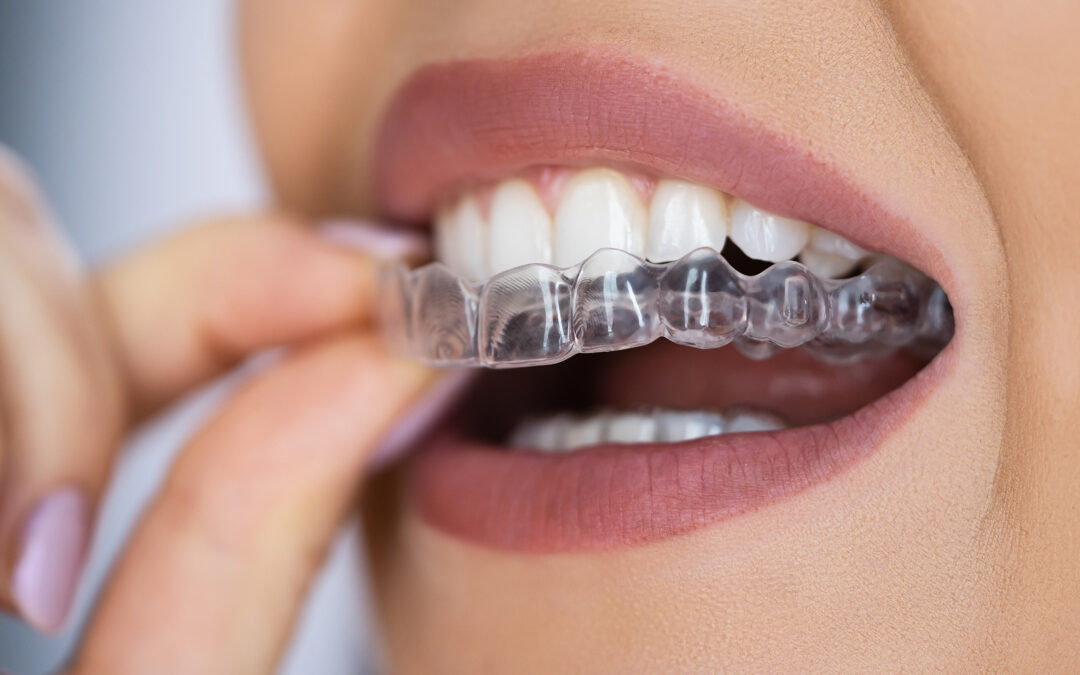
Dental aligners are clear, custom-made plastic trays that are used to straighten teeth. They’re an alternative to traditional metal braces and are often preferred for their discreet appearance and comfort. Here’s a brief overview of how they work and what you might want to know about them:
How They Work:
- Customization: Aligners are made based on impressions or digital scans of your teeth, ensuring they fit your mouth perfectly.
- Gradual Shifting: Each set of aligners is designed to shift your teeth in small increments over time. You’ll typically switch to a new set of aligners every one to two weeks.
- Clear and Discreet: The aligners are transparent, making them less noticeable than metal braces, which is why they’re a popular choice for adults and teens.
- Removable: Unlike braces, which are fixed to your teeth, aligners can be removed for eating, drinking, brushing, and flossing. This makes maintaining oral hygiene easier.
Advantages:
- Aesthetics: Clear aligners are much less visible than traditional braces.
- Comfort: Without the metal brackets and wires of braces, there’s less chance of irritation.
- Removable: You can take them out when you eat or brush your teeth, making it easier to maintain oral hygiene.
- Predictable Results: Many aligner systems, like Invisalign, use software to map out the treatment process, allowing you to visualize the end result before you even start.
Disadvantages:
- Discipline Required: Since they are removable, it’s important to wear them for 20–22 hours a day to achieve the desired results.
- Not for Everyone: Aligners might not be suitable for all types of dental issues, especially severe misalignments or bite problems.
- Cost: Aligners can be more expensive than traditional braces, though this can vary depending on the brand and treatment plan.

